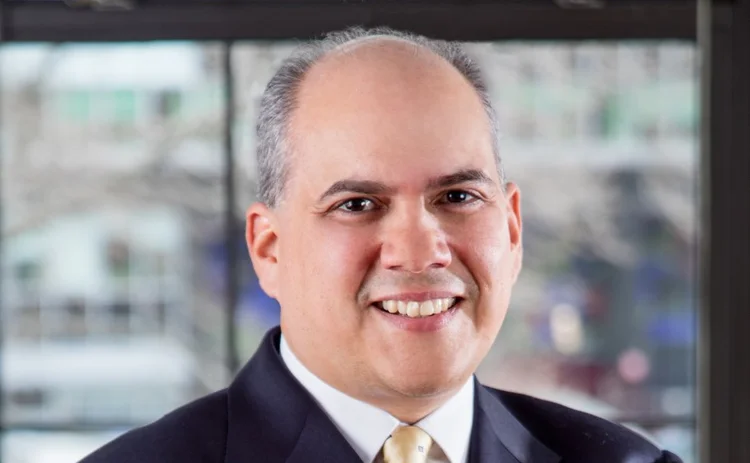SST Awards 2017 Winners’ Interview: SmartStream Maintains its Reconciliations Dominance
SmartStream continued it domination of the reconciliations category at this year's SST Awards, thanks to its TLM Reconciliations Premium platform. Victor Anderson speaks to Rocky Martinez about what sets the offering apart in a highly competitive industry.

Waters: TLM Reconciliations Premium continues to win awards against stiff competition across both the buy side and the sell side. What do you believe provides the platform with its competitive advantage?
Rocky Martinez, chief technology officer, SmartStream Technologies: There are several reasons why we keep winning. The first is that we have built the technology in a way that can be configured to adjust to each client’s needs at the time that they need to use it. We do have standard modules like ETDs, NAVs, cash, etc., but as you know, every time you go into a bank they have their own flavor of those functions. So, not only do we give them a module that allows them to start off with a good understanding of what needs to be done, but they also have the ability to tweak it according to the way their business processes are performed.
The second is access to data and the ability for businesses to have a built-in process. Not only do we allow the business to control the data and the processing, but we also provide the users—the reconcilers—with the ability to match whatever processes there are in the operation.
And third, our technology is constantly evolving—we’re currently in the process of producing a huge version of the platform that will be released in August or September of this year, which will feature a redesigned front-end.
Waters: TLM Reconciliations Premium has a number of delivery options. Have you noticed a preference for one mechanism over any of the others?
Martinez: We deliver in four ways: the traditional, on-premises model; we deliver a hosted solution; one where we provide the reconcilers [the actual workers] to manage the reconciliation function; and we also offer a model where if the client still wants to host the hardware and software but they want us to manage the software and the operations, we can do that too.
We understand that one size does not fit all. We’ve positioned ourselves not only with the technology but also with the operations, both technical and business, especially now that banks are trying to consolidate and reduce costs and staff numbers.
In terms of trends, what we’re starting to see is that a lot of our larger and mid-sized customers are looking for a perpetual model where they pay a fixed cost and we give them the hardware and the software, plus the technical operations support, and then if they need the business operations, we’ll add that to the service as well.
Waters: Typically, what are you clients’ most pressing needs in the reconciliations space, or does that vary from client to client?
Martinez: Clients need to manage all their regulatory-type reconciliations. With ESMA coming on and some of the banking regulations being introduced across Europe—and with the current administration and what that might mean for regulations in the US—a lot of the regulatory-type reconciliations are becoming hot for us, especially those around cash and positions because of the regulatory nature of those processes.
What we’re seeing is that customers do not want to do reconciliations on spreadsheets anymore because they don’t have the breadth of audit in order to track those reconciliations. We’re in the process of building tools to remove those spreadsheet reconciliations and get them onto our platform.
Waters: Given the significant rise in trade and data volumes across the industry in recent years, to what extent does scalability and processing “grunt” determine the success of a reconciliations platform?
Martinez: We are well-placed right now to deal with high trade and data volumes. We do tens of millions of reconciliations every day for one of our large clients, so we have the scalability. But we are also starting to look at technologies like Apache Spark, Apache Hive and Hadoop, which will increase our throughput but will not require such extensive investment at the customer level to do that grinding of bits and bytes.
Only users who have a paid subscription or are part of a corporate subscription are able to print or copy content.
To access these options, along with all other subscription benefits, please contact info@waterstechnology.com or view our subscription options here: http://subscriptions.waterstechnology.com/subscribe
You are currently unable to print this content. Please contact info@waterstechnology.com to find out more.
You are currently unable to copy this content. Please contact info@waterstechnology.com to find out more.
Copyright Infopro Digital Limited. All rights reserved.
You may share this content using our article tools. Printing this content is for the sole use of the Authorised User (named subscriber), as outlined in our terms and conditions - https://www.infopro-insight.com/terms-conditions/insight-subscriptions/
If you would like to purchase additional rights please email info@waterstechnology.com
Copyright Infopro Digital Limited. All rights reserved.
You may share this content using our article tools. Copying this content is for the sole use of the Authorised User (named subscriber), as outlined in our terms and conditions - https://www.infopro-insight.com/terms-conditions/insight-subscriptions/
If you would like to purchase additional rights please email info@waterstechnology.com
More on Awards & Rankings
Witad Awards 2024: EDM professional of the year—Neslihan Yegul, S&P Global Market Intelligence
Neslihan Yegul, vice president, head of EDM and thinkFolio at S&P Global Market Intelligence, wins EDM professional of the year in the 2024 Women in Technology and Data Awards.
Witad Awards 2024: Technology innovator of the year (end-user)—Laura Hamilton, Bank of America
Laura Hamilton, global head of corporate treasury, credit risk, climate risk, and financial forecasting technology at Bank of America, wins technology innovator of the year (end-user) in the 2024 Women in Technology and Data Awards.
Witad Awards 2024: Vendor professional of the year (data and operations)—Joanna Davies, OSTTRA
Joanna Davies, head of trade processing at OSTTRA, wins vendor professional of the year (data and operations) in the 2024 Women in Technology and Data Awards.
Sell-Side Technology Awards 2024: Best sell-side front-office platform—Bloomberg
Product: Bloomberg TOMS
Most read
- Deutsche Börse democratizes data with Marketplace offering
- Chris Edmonds takes the reins at ICE Fixed Income and Data Services
- Sell-Side Technology Awards 2024: All the winners


